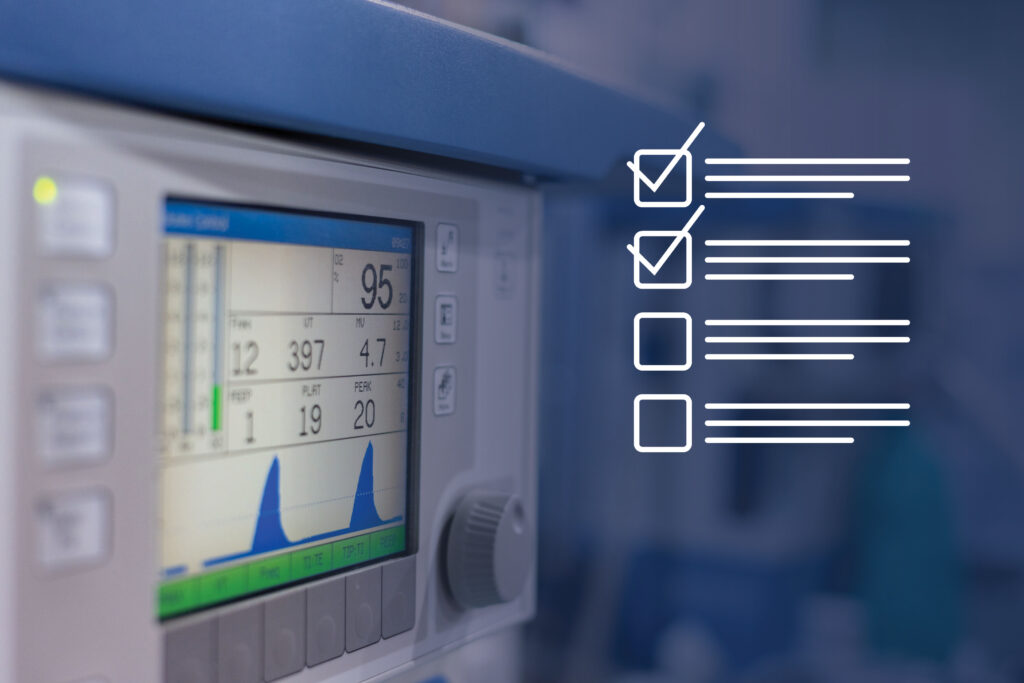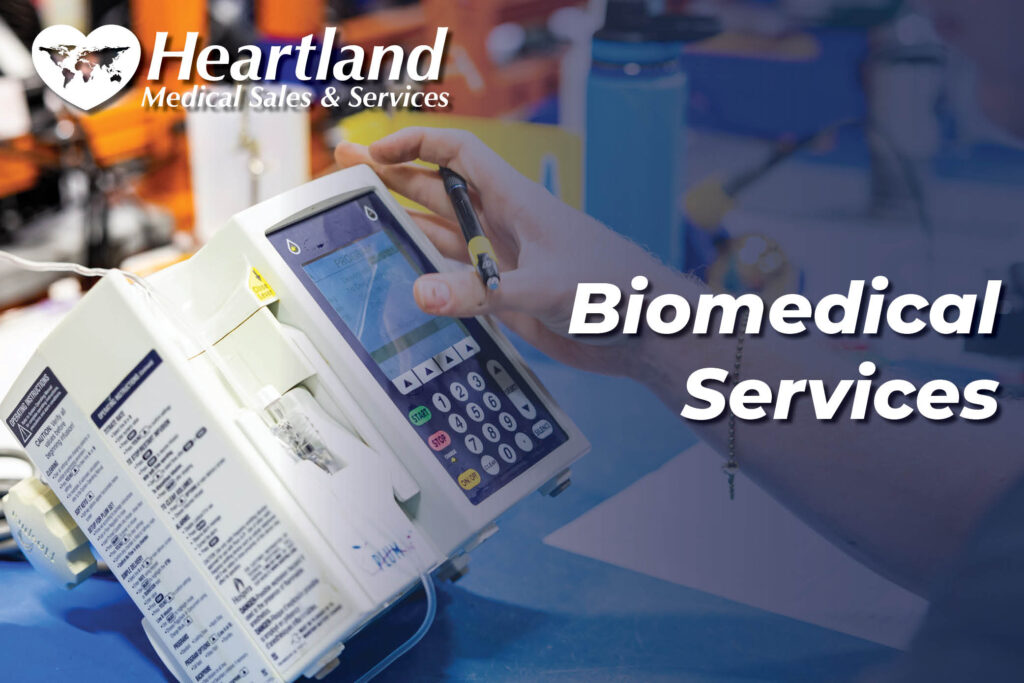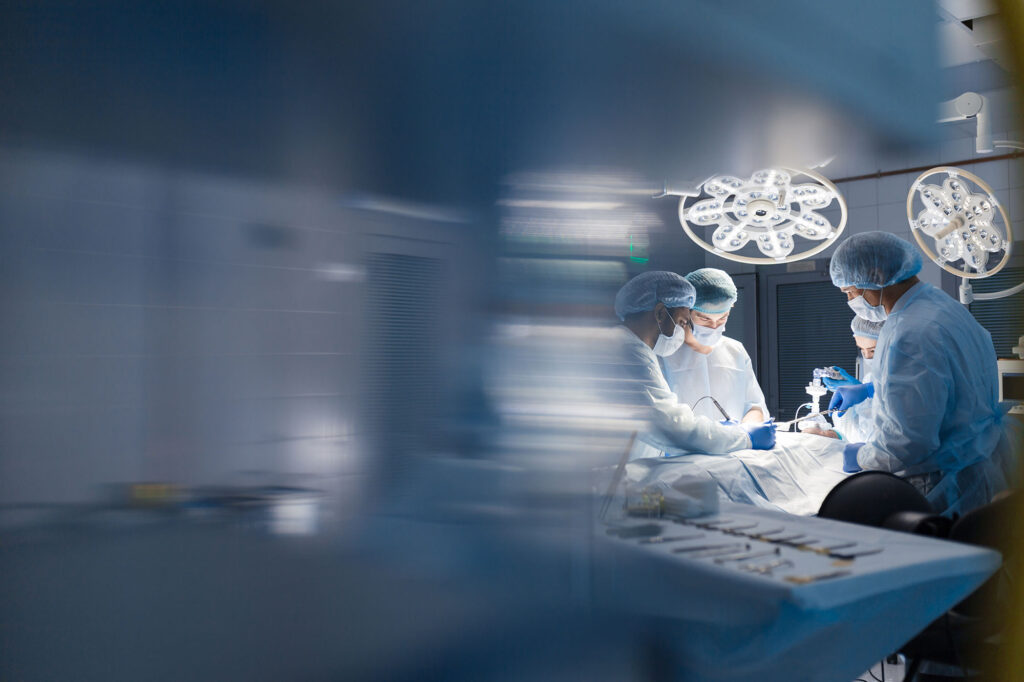Are you unsure what an anesthesia machine checklist might include?
Keep reading and check out this ultimate checklist here.
Since the 1970s, the average mortality rate from anesthetic-based procedures has dramatically reduced from 1 in every 10,000 patients to 1 in every 200,000 patients, and that number decreases every day.
Today’s advancements in anesthesiology medicine have led to the safest forms of patient care. But it’s directly through the strict policies surrounding your anesthesia machine and equipment that keeps the rate of medical error so low. Your machinery has a higher chance of developing damage and defects if you’re missing parts or not using your unit properly.
Using an anesthesia machine checklist to set up your machine and perform routine maintenance saves you money and time and ensures that your patients always receive the best treatment.
Take a look at the main components every anesthesia needs and the best practices to sustain optimal performance.
Anesthesia Machine Checklist
There are various types of anesthesia machines available for the use of patient care. Does your practice have a portable anesthesia machine? Perhaps you’re in need of one more advanced.
Regardless of the type of unit, each anesthesia machine must come with the basic anatomy that will allow it to deliver oxygen and anesthetic gases while removing carbon dioxide from the breathing system. The essential equipment needed is as follows:
- Connection to the oxygen supply, medical air, and nitrous oxide from a pipeline or gas cylinders
- Pin index safety system yoke with Bodok seal: Supports the cylinder (if required)
- Hosepipe with schrader probes and a noninterchangeable screw thread: To connect to the pipeline (if required)
- Pressure gauges: To determine the levels of gas in kPa measurement
- Check valve: To prevent gas backflow
- Oxygen failure alarm: To signal when oxygen pressures or levels fall below the machine-specific threshold
- Nitrous oxide hypoxic guard: Works in relation to the levels of oxygen (once oxygen levels drop, the nitrous oxide is then shut off to prevent a hypoxic gas mix)
- Flowmeters: To measure the rate of gas flow as it passes through (this includes the flow control valves, tapered tubing, and bobbin for accuracy)
- Flow control valves: To adjust the flow rate of gas
- Vaporizer: Holds the anesthetic agents in liquid form to be vaporized and picked up by the flowing gas
- The back bar: Supports the vaporizer and connects it to the anesthesia machine
- Common gas outlet: Connects the anesthetic circuit for delivery to the patient
- High-flow oxygen flush system: To disperse emergency oxygen quickly
- A scavenging system: To safely remove the waste of anesthetic agents
Modern Tech in Anesthesia Equipment
Through the modernization of their system upgrades, some equipment that once required manual manipulation was swapped with newer tools that fulfill their purpose automatically. You can see this specifically in tools like the new vaporizers available on the market.
There was a need to streamline and consolidate the surgical equipment necessary to monitor the patient vitals while simultaneously controlling the anesthesia output. The newer anesthesia machines solve this dilemma and incorporate systems for monitoring a patient’s blood pressure, heart rate, ECG, and temperature, with an option for additional add-ons.
Components of an Anesthesia Workstation
Coinciding with the anatomy of the machine, the components of an anesthesia workstation is just as important when performing anesthetic-based procedures. Often combined onto an anesthesia cart, it’s necessary to have the following instruments and equipment on hand:
- Anesthesia machine unit
- Additional anesthetic vaporizers
- Oxygen masks
- Nasal oxygen set
- Endoscope
- Laryngoscope
- Endotracheal tube
- Additional HEPA filters
- Spinal Needles
- Syringes
- Hypodermic needles
- Tuohy needle
- Epidural catheter
- Bag valve mask
- Mucus sucker
- TOF Monitor
- Eschmann stylet
Pre-Anesthesia Checklist
A recent study showed that out of 9,806 fault claims, 85% of them involved anesthetic error by the provider, and 35% were ruled to have been preventable through the use of proper pre-anesthesia machine checks. These preoperative checks, which should be performed within 48 hours before surgery, reduce these fault chances.
When checking your anesthesia equipment, remember these following steps:
- Check the oxygen cylinders
- Check that the self-inflating manual ventilation devices are ready and functioning properly
- Check to ensure that patient suction can clear airways properly
- Power up the anesthesia delivery system to and confirm AC power
- Check alarms
- Check monitors
- Confirm the pressure on any spare oxygen cylinders
- Confirm piped gas pressures
- Check to ensure vaporizers are filled and filler ports are closed
- Inspect gas lines, flowmeters, and common gas outlets, and verify that there are no possibilities for leaks
- Check scavenger system
- Ensure system for carbon dioxide absorption
- Test breathing system pressures
- Check breathing system for leaks
- Verify inspiration and exhalation systems function properly
- Fill out the checklist form of completion
- Re-confirm ventilator settings before every use
Newer machines may have automatic self-checking features that allow them to run diagnostics of potential defects. They will require users to check aspects themselves, and what requires checking varies with each model.
If you’re unsure of your machine’s requirements, be sure to seek out a professional anesthesia machine service team.
An Anesthesia Machine Checklist Made Simple
When you invest in the best anesthesia equipment, you’re providing your patients with the utmost quality care. Utilizing this anesthesia machine checklist not only guarantees that your machine meets the standards of operative performance but also guarantees its longevity.
Whether you’re looking for a new anesthesia machine, replacing parts, or maintenance assistance, Heartland Medical Sales and Services offers everything you need to perform your patient procedures. We’ll even help you shop and navigate the different anesthesia machines to find one that’ll fit your practice.
Get started today.
For more information on the levels of anesthesia machines we offer, contact us below today.
"*" indicates required fields







